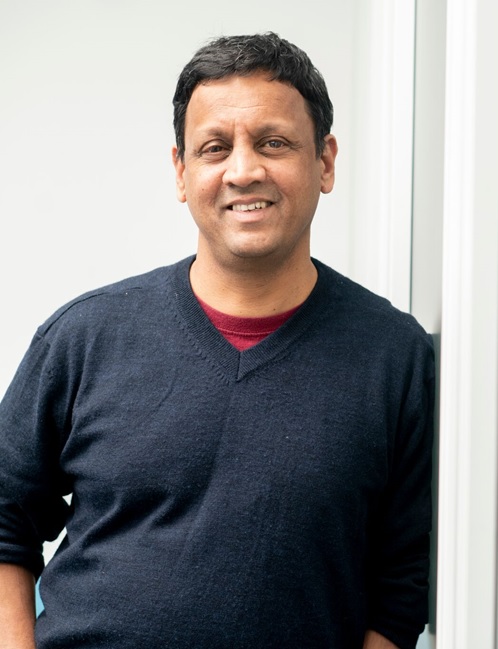Mohan Balasubramanian
Technical Summary
Molecular mechanisms regulating eukaryotic cytokinesis
The Balasubramanian laboratory is interested in understanding molecular mechanisms regulating eukaryotic cytokinesis, a process that depends on an actomyosin-based contractile ring in many organisms. The group uses fission yeasts, Schizosaccharomyces pombe and Schizosaccharomyces japonicus as models, as they are amenable to the methods of genetics, biochemistry, and high-resolution imaging. Through genetic analysis, they have identified a large number of mutants defective in various stages of cytokinesis and identified the corresponding gene products, such as actin, myosin II, profilin, tropomyosin, and other proteins. They have also investigated the function of the proteins in actomyosin ring assembly and contraction through high-resolution microscopy. Recently, the group has developed a method to isolate contractile actomyosin rings that contract upon addition of ATP in vitro.
Currently, the group is investigating these questions.
1. How is the actomyosin ring organized? The isolated rings are complex structures containing ~ 150 different proteins. The availability of isolated actomyosin rings presents an unprecedented opportunity to understand the structure of the cytokinetic actomyosin ring. Through the use of electron cryotomography the group will investigate the organization of the actomyosin ring and the possible location of important actomyosin ring proteins within the ring.
2. How is it assembled? The group is devising an approach to reconstitute actomyosin ring assembly in permeabilized protoplasts and cells. Towards this goal, they are developing methods to purify large quantities of actomyosin ring proteins with site
specific chemical modifications using novel approaches such as genetic code expansion coupled with protein expression in cell lysates.
3. How does the ring contract to generate tension? The group is using the “isolated ring” system to understand the mechanism of ring contraction and is investigating the roles of various actomyosin ring components in generating tension. They take advantage of biophysical approaches and classical genetics to address these questions.
Selected publications:
1. Palani, S, Köster, D.V., Hatano, T., Kamnev, T., Kanamaru, T., Brooker, H., Hernandez-Fernaud, J.R., Jones, A.M.E., Millar, J.B.A., Mulvihill, D.P., and Balasubramanian, M.K. (2019). Phospho-regulation of tropomyosin is crucial for actin cable turnover and division site placement. J Cell Biology DOI: 10.1083/jcb.201809089.
2. Lim, T., Hatano, T., Kamnev, A., Balasubramanian, M.K.,* and Chew, T.G. (2018). Equatorial Assembly of the Cell Division Actomyosin Ring in the Absence of Cytokinetic Spatial Cues. Current Biology (doi: 10.1242/jcs.213827). MKB is the corresponding author.
3. Chew, TG, Huang J, Palani, S., Kamnev, A, Hatano, T., Somesse, R., Gu, Y., Oliferenko, S., Sivaramakrishnan, S., and Balasubramanian, M.K. (2017) Actin turnover ensures actin filament homeostasis during cytokinetic ring contraction. J Cell Biology. 216: 2657-2667. DOI: 10.1083/jcb.201701104
4. Palani, S., Chew, TG, Srinivasan, R., Kamnev, A., Mishra, M., Sevugan, M., Chapa-y-Lazo, B., Gayathri, P., and Balasubramanian, M.K. (2017) Motor activity dependent and independent functions for Myosin II in Cytokinesis. Current Biology 12:751-757. https://doi.org/10.1016/j.cub.2017.01.028
5. Huang, J., Chew, TG, Gu, Y., Palani, S., Kamnev, A., Carter, N., Martin, D, Cross, RA., Oliferenko, S., Balasubramanian,M.K. (2016). Curvature induced expulsion of actomyosin bundles during cytokinesis in fission yeast. eLife. http://dx.doi.org/10.7554/eLife.21383.

